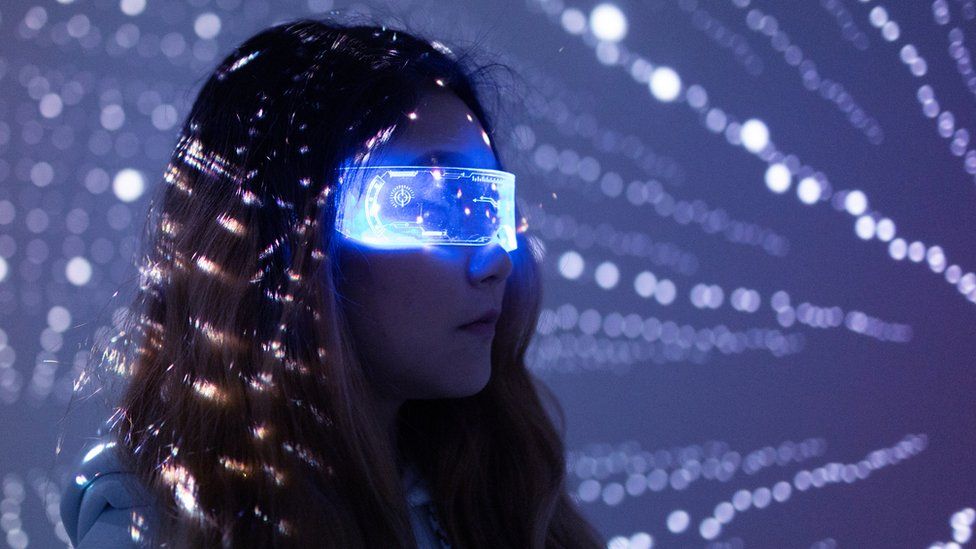Unless you pay attention to crypto and cyber news, you might not know much about the Metaverse. But when it hit the headlines that property in this decentralized space sold for a record-breaking $2.43 million, the term became a household word.
Still, not everyone understands the difference between “metaverse” and “virtual reality.” They are quite similar, but there are some nuances between the two that make them distinctly unique.
The main distinction is that the metaverse is a part of virtual reality, whereas VR itself can cover various other concepts. To break down the two terms even further, here are some key differences to consider.
1. The Metaverse is a Shared Space in a Virtual Land
Although the use of “metaverse” as a global term is relatively new, the idea itself has been around since 1992. Author Neal Stephenson first used the word in his novel “Snow Crash.”
He described his fictional metaverse as a virtual shared space that included VR, AR (augmented reality), and the internet. From there, the idea took seed and blossomed.
An Example Metaverse
One of the most visible examples of a metaverse appeared in the movie “Free Guy,” released in 2021. Ryan Reynolds lives in Free City, a place where non-player characters (NPC) and video game players interact.
The “heroes” are real people playing an online game where their characters use augmented reality glasses to see the metaverse. Gamers all over the world come together online through a combination of AR and the internet.
Since the players don’t use VR headsets, Free City isn’t exactly a metaverse. But it’s an extremely close example that gives the average person an idea of the term’s meaning.
Players are sharing space in a virtual land, and now they can buy property there, too.
2. VR Is More Than Gaming
Another integral difference in the terms is that the metaverse focuses on human interactions. Virtual reality can do so much more.
VR is already in use in healthcare facilities, stock market trading, and education. Individuals use special programs and equipment, typically headsets, to immerse themselves in another environment. There, they can interact with their surroundings as they change.
The metaverse takes VR to another level. It adds elements of augmented reality to supplement the user’s surroundings and brings in other people, too. Human connection differentiates VR from the metaverse.
3. The Metaverse is Built on Blockchain
Virtual reality surroundings are, as the term implies, virtual. They’re designed and encoded in software, and the potential user movements are predictable.
The metaverse, on the other hand, is built on blockchain technology. A cryptocurrency called MANA is the medium of exchange for anyone who wants to visit and live in Decentraland. It’s the only place, currently, where a true explorable virtual metaverse exists.
The physical headquarters is owned by the Metaverse Group and is located in Toronto. Its virtual counterpart is called Decentraland, a metaverse version of Silicon Valley. There, virtual visitors can do everything from shop and gamble to try on the latest fashions and explore museums.
They can also purchase digital land, where they build their own homes and shops using Ethereum blockchain currency and technology.
Consider it to be something akin to owning land in another realm, only this one is virtual. Your physical presence stays behind at your computer while your mind is transported to a new world.
4. The Metaverse is Barely Tapped
A final distinction is that VR, while we’ve hardly seen the tip of the iceberg, has consistently defined parameters. The metaverse has barely been tapped into and is only vaguely understood.
Instead of scrolling through content or playing a video game on your system, you’re part of it. This explanation given by Facebook’s Mark Zuckerberg is a simple synopsis.
Facebook has a heavy role in defining what the metaverse is since their technology, the Oculus Rift, is almost monopolizing the industry.
But other tech giants, like Microsoft, are edging into metaverse territory, too. Since it doesn’t technically exist, there are no limits to who can build a structure in this gigantic virtual universe.
Conclusion
Virtual and augmented reality and the metaverse are still mostly unknown territory. As the potential uses for each aspect continue to be unraveled, there will be new technologies and advancements.
Right now, VR in all forms has already made a significant impact on the way we live our daily lives. It’s exciting to imagine how the inclusion of a metaverse and other AR concepts will change the future.
